KEF Q300 Bookshelf Loudspeakers Review
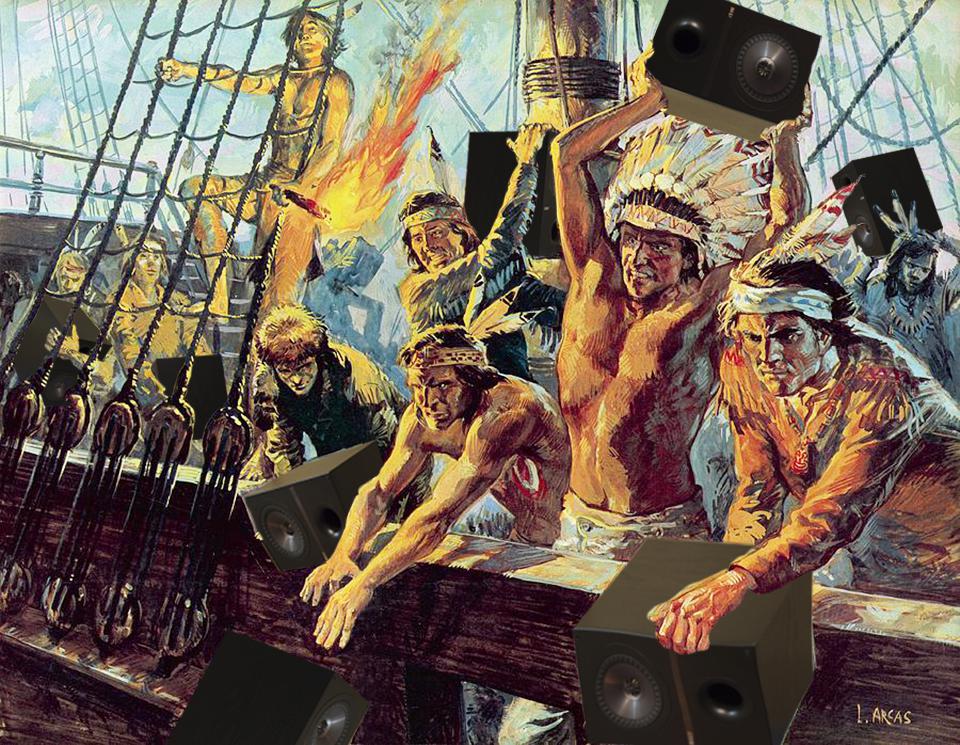
NoAudiophile declares independence from the British sound!
American independence from the British was a hard fought victory, but many audiophiles still pay homage to the old monarchy when choosing a sound system. These Benedict Arnold's are going to get schooled on what they are missing when they hoist the union jack in their listening rooms.
I've heard British sound described as a dip in the presence zone (between 2-5k) that will help to hide the speakers from the listener. This may have been the case back when the Brits were using soft domes and paper cones, for a fact I know the presence zone is still something that B&W plays with from my
limited time with a pair of CM9's, but it's not a flaw that is easy to pick up from casual listening as it is something missing. The modern British sound with stiff cone materials is a mix of crunchy treble and over done midbass, this flavor is evident even in full sized flagship speakers like the B&W's 800 diamond or the KEF Blade.
For this review another local does me right and brings in a pair of personal speakers for me to devalue. This time it's a pair of KEF Q300 speakers which Connor, the loyal reader, picked up on craigslist a while back and uses in some type of flying V configuration floating above his triple monitor setup on his desktop.
People that follow the site might of picked up on the fact that I've not been impressed with the KEF speakers that
I heard at RMAF. Here I get some real quality time with a pair to find out what it is that gives these speakers the sound signature that permeates the line from top to bottom. Yes, outside of bass the Blade 2 sounds damn near just like a LS50, which sounds like a Q300. They all use the same ingredients, with just different recipes that hit the same taste buds.
Component Overview:
Tweeter
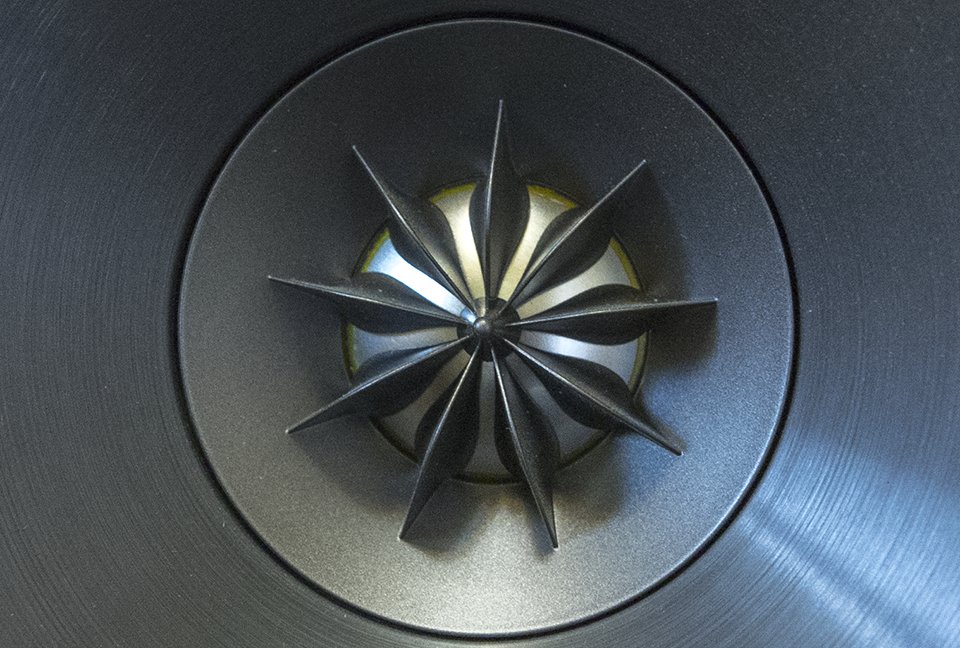
This speaker has a coaxial driver, that means that the tweeter is loaded into the woofer basket to act as a single point source. Keep in mind that the tweeter itself does not move with the woofer, it sits still while the woofer is flopping around. This is inherently a shitty place to put a tweeter, because of driver interaction, diffraction, and dispersion issues. KEF assures us that they have solved all of these problems.
The dome material is Aluminium, and I'm guessing that the microscopic yellow bit around the outside is some type of surround or lube. Now for the obviously strange part... the fruity waveguide/diffuser, which KEF calls a tangerine waveguide. It's supposed to help integrate the tweeter with the cone of the woofer so that they play nice together. The "waveguide" covers so much of the tweeter, my guess is that it acts more as a mechanical filter to flatten the tweeters upper end response than as a waveguide.
Woofer

The woofer is a 6.5 inch version of the Uni-Q driver and is also made of Aluminium. This driver has a goofy surround with a 90 degree angle on the outside edge to avoid edge diffraction issues with the tweeter. Looks like a pretty neat solution, and for me this is honestly the most impressive thing on the speaker.
Port
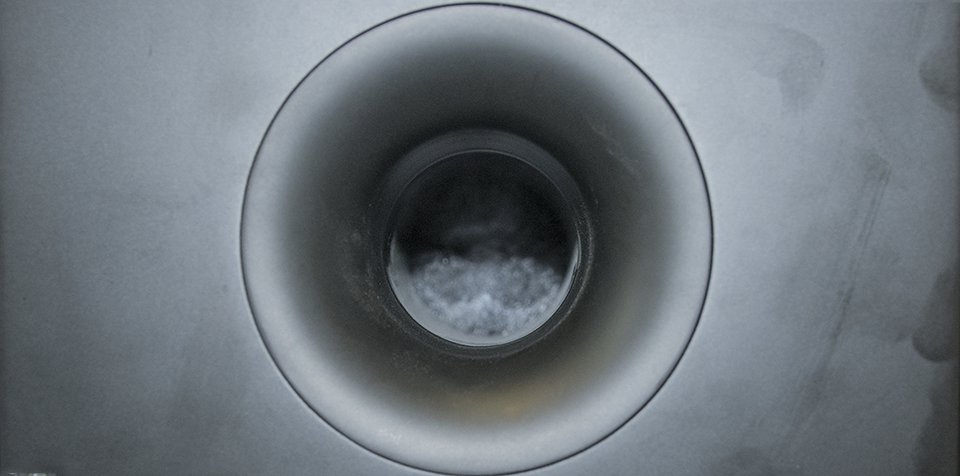
Big ole' three finger wide hole sticking in the front of the box. The flare on this is silly huge.
Cabinet
These speakers are about average size outside of the depth, which is a hair over 1 foot. The speakers are sufficiently hefty and a knuckle wrap sounds like the speaker has a brace inside. The finish is some thin vinyl wrap, and the baffle is a thin plastic part which is molded to fit nicely to the driver and port, keeping edge diffraction to a minimum as well as hiding all of the screws which kept me from taking the speaker completely apart.
Terminals
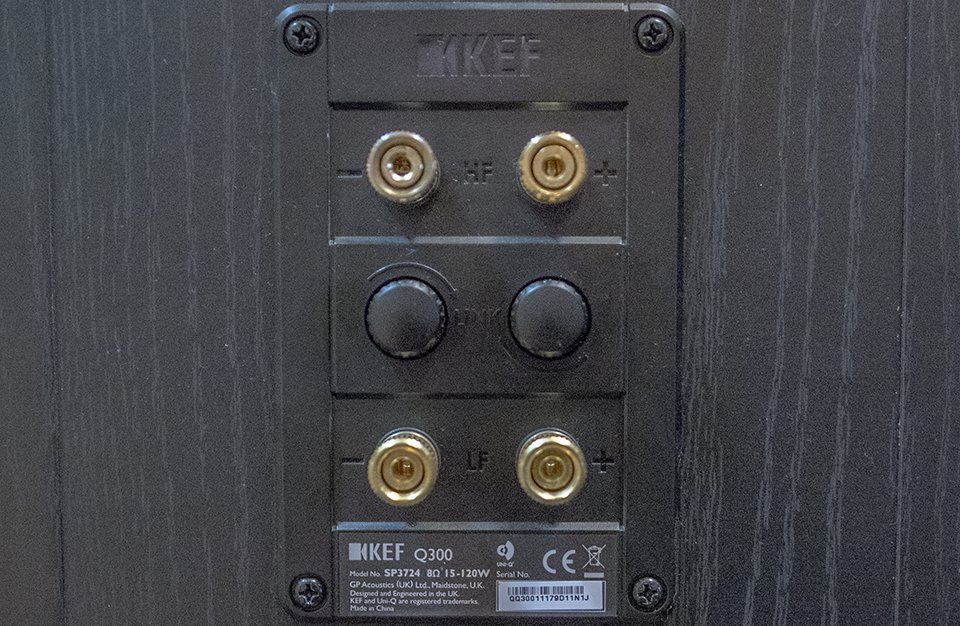
Dual binding posts just in case you want to run the tweeter on one amp and the woofer on another. The pair of knobs in between are for shorting the leads together internally so that you only need to run one pair of wires.
Crossover
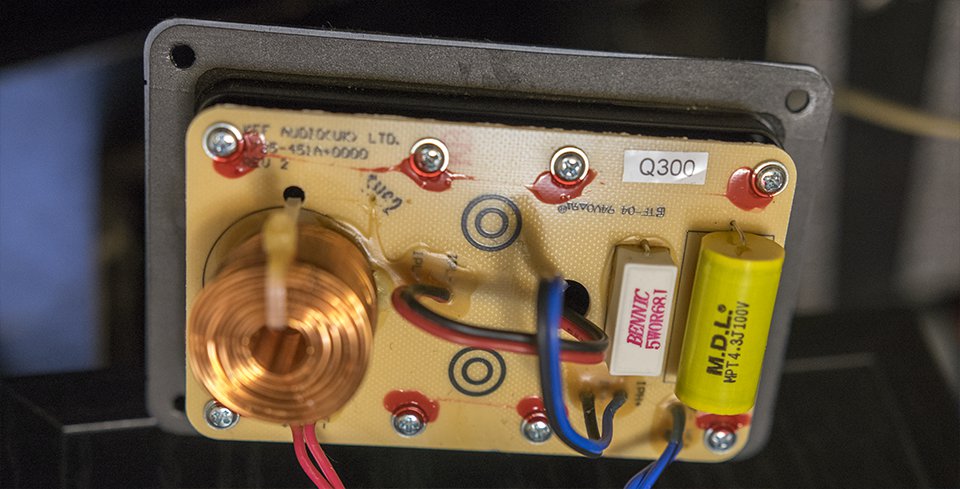
If you want to throw shit at the screen, now is the point in the review where that would be appropriate. Yes, this is a first order crossover on a pair of $650 speakers. I guess KEF figured that because they are using a coaxial with all kinds of fancy on it they just don't need to do a proper crossover.
Grills
I was not supplied grills for these speakers, Connor is a bad ass and does not use grills even when hauling the speakers in his car.
Desktop Setup:
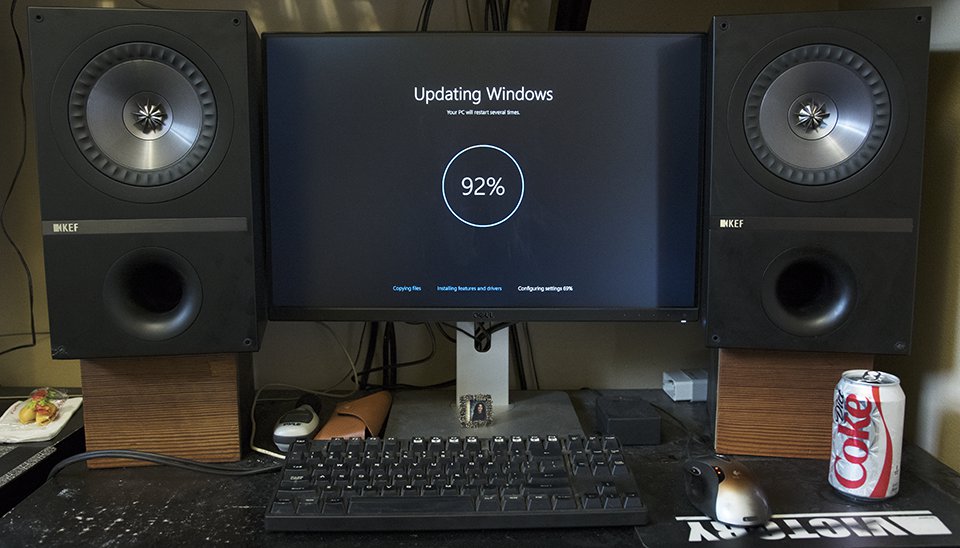
I'm feeding the KEF Q300's with digital files over an optical connection to an old Onkyo home theater receiver which powers them nicely. The speakers are up about 5.5 inches above my desktop and sitting ear level with the tweeters. These speaker needed to be toed in about 10-15 degrees in this very near field setup.
Listening Notes:
Good, but not a smooth sound.
Audiophiles will hear these speakers and tell you to buy a good amp to make up for the harshness.
Mid bass is boosted, there is that British sound I was talking about.
You can pick your response by how far you toe the speakers in, but all of it has the same signature, it's tattooing a union jack on my ear drums.
Look at all these details, but not too closely, because it's a little uncomfortable.
Female vocals are enticing, but over done.
The end of Kate Nash's Merry Happy pierced at least one of my ears.
My 4 year old asked me if the waveguides on the tweeter were razor blades, I told him no, but I think he was on to something, there is some sharp sounds coming out of these speakers.
Cymbals are overdone, makes things less enjoyable, because that sound is front and center.
V shaped feel to the response, I don't like the top or the bottom of these speakers.
Outside of all of the bullshit I don't agree with, these have a low distortion sound that is clean.
Chris Cornell's voice is a mix of sloppy midbass flapping with harsh upper crap smeared on top.
Measurements:
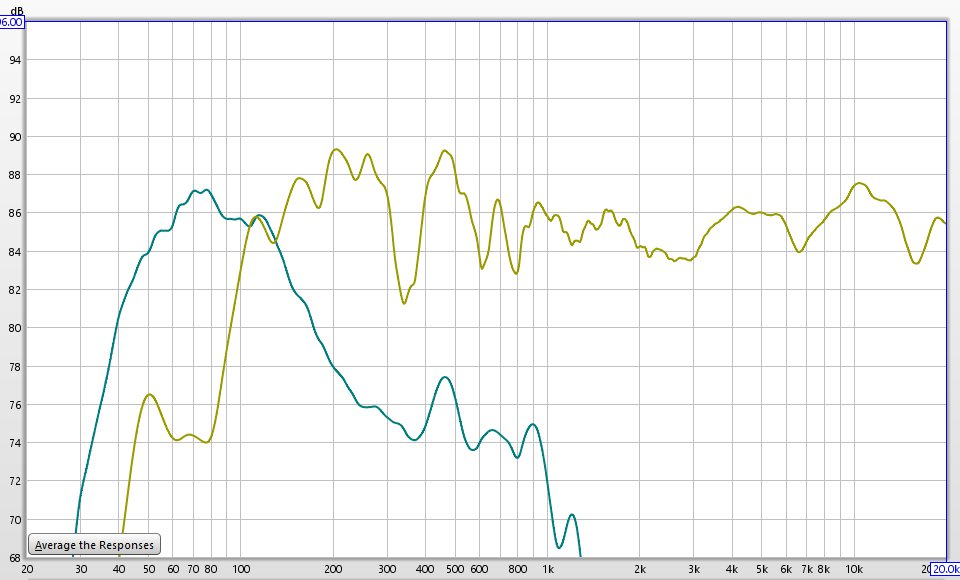
The measurement is accurate from 700Hz on up, below that my room modes show up, but that data can gives us an idea of what the speaker is doing tonally. Port cancelation is happening, so I also include a close mic measurement of the port. To my ear these speakers sound like the -3dB point is about 50Hz. The treble range looks jagged, but +-2dB means these are pretty good speakers. Comparing this to other speakers I've measured it's easy for me to spot the midbass bump which looks to be centered around 200Hz.
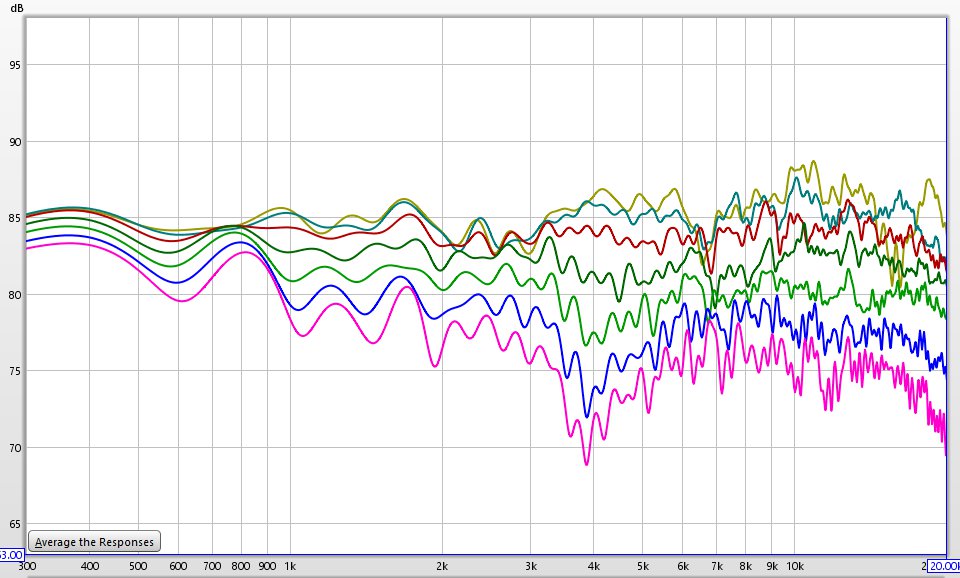
This is group of measurements is from 0-60 degrees off axis in 10 degree intervals. These are windowed to avoid any reflection data from the room, which limits the results to 300Hz and above. That red line in there is 20 degrees off axis, and that response looks great. The problem is that the issues with the on-axis and 10 degree measurements are noticeable louder than this "good response" and will be audible no matter how you toe the speakers. Presence zone tinkering seems to be limited to an off axis null centered at 4k, this might be an artifact of the first order crossover.
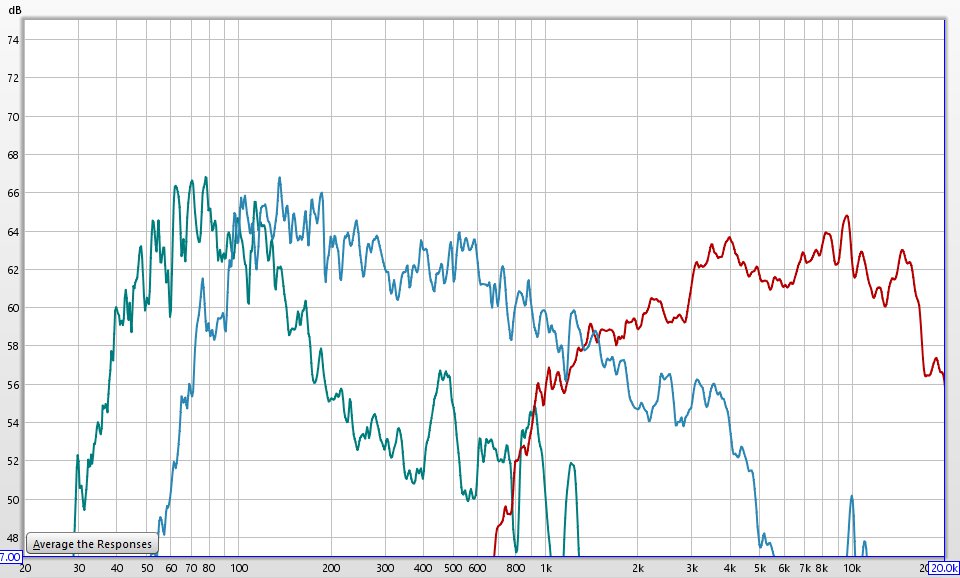
Used the dual binding posts to get these measurements, so there is no interaction from the drivers here. Close mic measurements of the drivers show that the woofer is going into breakup around 3k and it's still pretty loud at that point with peaky shit happening all the way up in the 10kHz range, this in itself may be the cause for harsh sounds coming from the speaker. The tangerine waveguide does not do well with the close mic measurements of the tweeter, which measures better further away. It was hard to get a read on where the crossover is happening, but I think it's centered somewhere around 3kHz, but it's a very slow crossover with only the coaxial nature of the speaker saving it from massive comb filtering issues.
DSP Correction:
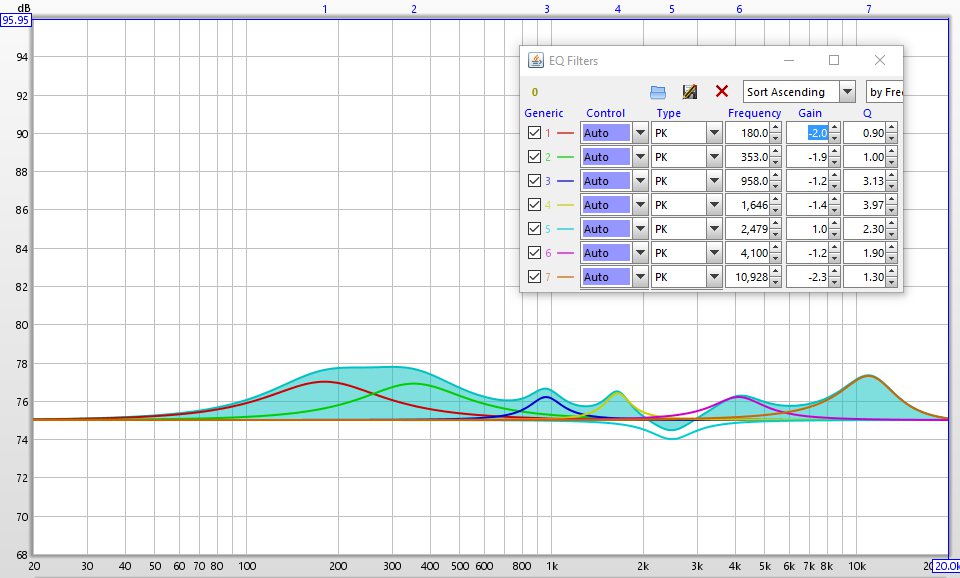
I based my correction on an average of the on axis as well as the 10 and 20 degree off axis measurements. This was done after some trial and error testing out different methods to improve the speakers sound. We end up smoothing out and lowering the treble slightly and pulling 2dB out of the midbass.
Corrected Listening Notes:
Sounds reasonable, even listening to ridiculous stuff.
Female vocals are immediately improved, smooth sensual without the harshness that was putting me on edge.
Lost a little bit of volume in the sensitive part of the audio band, it's noticeable but not missed.
Low distortion is a path to happiness, these cleaned up sound super clean and full of music.
Bass is more defined and feels deeper now that the midbass slosh has stopped.
I'm playing God Bless America on repeat to celebrate this victory.
Chris Cornell's voice is perfect now, sounds like an angel with slipstream fighter jet wings for vocal cords.
Now I'm in love with these near field, even with the changing tone as I move my head it's a great experience.
Final Thoughts:
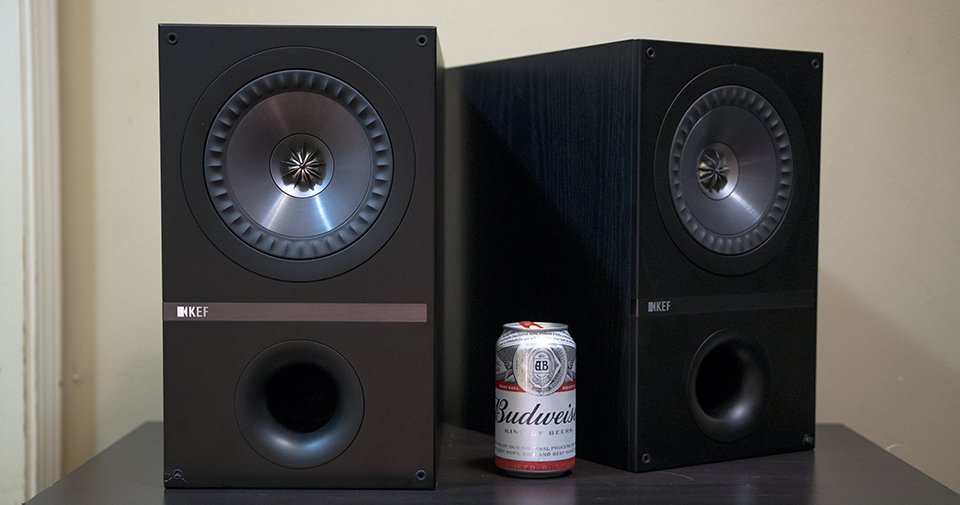
Given more time I would have probably pulled out the MiniDSP and done up a full active crossover for these speakers. If it's something Connor wants to try out maybe it will happen at some point in the future. While I did enjoy the build quality of the drivers and the clean sound they provided once corrected, these speakers have other flaws besides just the crossover. They don't disperse sound very well in my opinion, the off axis tone is too noticeably varied and the narrow sound field is not to my liking. At this price point there are a lot of other speakers of sufficient quality and it pays to be picky.
Click here to get the DSP correction file for these speakers.
Click here to buy KEF Q300 speakers or check out the system finder to see what I recommend.
Other content you may like:
- Vanatoo Transparent One Review - Software update brings new standard of performance!
- Lone Star Audio Fest 2018 - Staying up late, drinking too much, smoking like chimneys!
- Andrew Jones goes back the be begining, ELAC B5.2 Debut 2.0 Review is up!
- New Scores for all reviewed speakers - Compare and sort for fun!
- Creative Sound Solutions DIY Solution for the high end - CSS Criton 1TD v2 review is up!
- Dayton Makes a Budget Desktop speaker with a crossover - Dayton Audio MK402 review is up!
- Smaller than small, deeper than deep - iLoud Micro Monitor review is up!
- Vanatoo's new speaker, The Transparent Zero review is up!
- SVS Prime Bookshelf Review is now available for your viewing pleasure
- ELAC A-Stock UB5 Listening Impressions are up!
- 30 years in the making, the ancient Bose 901 finally gets measured - The Bose 901 review is up!
- Lock and load, we are hitting the bottom of the barrel with both barrels - The Logitech z313 review is up!
- Bulletproof speakers... No, it's just the B&W 686 S2 Review!
- Declare independence from the British sound! - The KEF Q300 review is up!
- Recommended System Finder - Just in time for the Holidays!
- JBL LSR308 Studio Montor - Super Massive Epic Review!
- Two years after starting this site I finally get around to talking about my stereo.
- Small and cheap speakers transform into retarded and good... Micca COVO-S Review!
- AMT tweeter on a B652? The Dayton B652-AIR is reviewed for great justice!
- JBL LSR305 Studio Monitor Review!
- Zu Essence Review!

